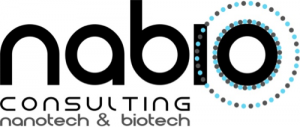South Africa needs to start to venture into nanotechnology commercialisation by employing sustainable models
NPEP Newsletter, March 2016
 Nanotechnology is no longer just an emerging field of science or science fiction. Many countries already have nano-products in their marketplace (Figure 1). Nanotechnology has the potential to impact many industrial sectors and every economic sector across the globe, with the market for this technology estimated to grow to as much as $3 trillion by 2020.
Nanotechnology is no longer just an emerging field of science or science fiction. Many countries already have nano-products in their marketplace (Figure 1). Nanotechnology has the potential to impact many industrial sectors and every economic sector across the globe, with the market for this technology estimated to grow to as much as $3 trillion by 2020.
In the last two decades, the South African government has invested a substantial amount of funds into nanotechnology research in the health, water and energy sectors. However, the development of nanotechnology in South Africa is hampered by many barriers such as regulation, standards, health & safety issues and public perception. Some of the aforementioned factors have made it very difficult to move this high-tech research from laboratories into the marketplace.
In order for South Africa to commercialise its nanotechnology research results, the country must consider smart commercialisation strategies that could match its potential. Such commercialisation strategies may include:
- Licensing venture: in this case, nanotechnology may be commercialised through marketing for technology or intellectual property (IP) in exchange for compensation;
- Spin-off or start-up venture: this strategy entails nanotechnology being commercialised by transferring the IP to the new business venture with the support of a parent company. This is often spun out from university laboratories, research industries and/or by entrepreneurs;
- Larger corporations venture: in this case, nanotechnology may be commercialised through alliances with larger corporations. Partnerships of this nature are often motivated by nanotechnology application, finance, infrastructure, manufacturing and marketing capabilities;
- Alliance business venture: in this instance, nanotechnology may be commercialised through business alliances. In most cases, technology is designed to meet market need. Investors decide on which technology should be designed and the application for which it should be designed.
- BRICS alliance venture: nanotechnology may also be commercialised by South Africa entering into a joint venture with other BRICS countries, namely, Brazil, Russia, India and China. In this case BRICS countries would collaborate with each other to enhance the economic benefits. This could possibly be done by exchange programmes with each other, particularly with those BRICS countries that already enable nanotechnology ventures; or
- Partnerships with non-BRICS countries: similar to the above, nanotechnology may also be commercialised by South Africa entering into a joint venture with non-BRICS countries, with which South Africa has a memorandum of understanding (MoU) on science and technology. Such countries could include Malaysia, Japan, Switzerland, Sudan, Argentina, South Korea, Romania and so forth. The aim of such a joint venture would be the benefits both countries would receive in relation to socio-economic development, education and so forth.
Nanotechnology has the potential to improve the economic performance of developing countries such as South Africa. It would therefore follow that there is a need to find sustainable commercialisation strategies, in order to make the best out of nanotechnology patents and/or research results (Figure 2). However, success in commercialisation will require multi-stakeholder partnership strategies between public and private sectors, inventors and investors, universities and industry, research institutes and larger corporations and developed and developing countries. It will also require long term investments into infrastructure for nano-manufacturing industries. In addition, investment is required in entrepreneurship programmes that focus on manufacturing nano-products at a low cost with inexpensive materials, which could also lead to job creation.
“Nanotechnology will have a positive impact on economic development only if it provides new solutions and does not create new problems” Dr. Angela Hullmann [European Commission: The economic development of nanotechnology – An indicators based analysis].

Figure 1: Countries active in the production of nanotechnology-based building products presented to the international market by 106 enterprises by January 2015. http://statnano.com/news/50098

Figure 2: Number of nano-articles published by South Africa nanotechnology organizations in 2013. http://statnano.com/country/south_africa
Article by Dr Steven Mufamadi PhD (Wits), Director of Nanotech & Biotech (NABIO) consulting (Pty) Ltd.
Nanotechnology within nanomedicine
Science and Technology Minister opens nanomaterials facility
The solution to neurodegenerative diseases
MSc Nanoscience Postgraduate programme growing in leaps and bounds
1st Symposium on Nanomedicine and Malaria in South Africa
7th World Nano Conference (Nano2016)
DST-NRF Nanotechnology Symposium
The 6th International Conference on Nanoscience and Nanotechnology in Africa
Nanotech France 2016 International Conference & Exhibition
Science Communication Training Programme for Female Scientists and Researchers
Science Communication Training and FameLab Heat in different provinces
